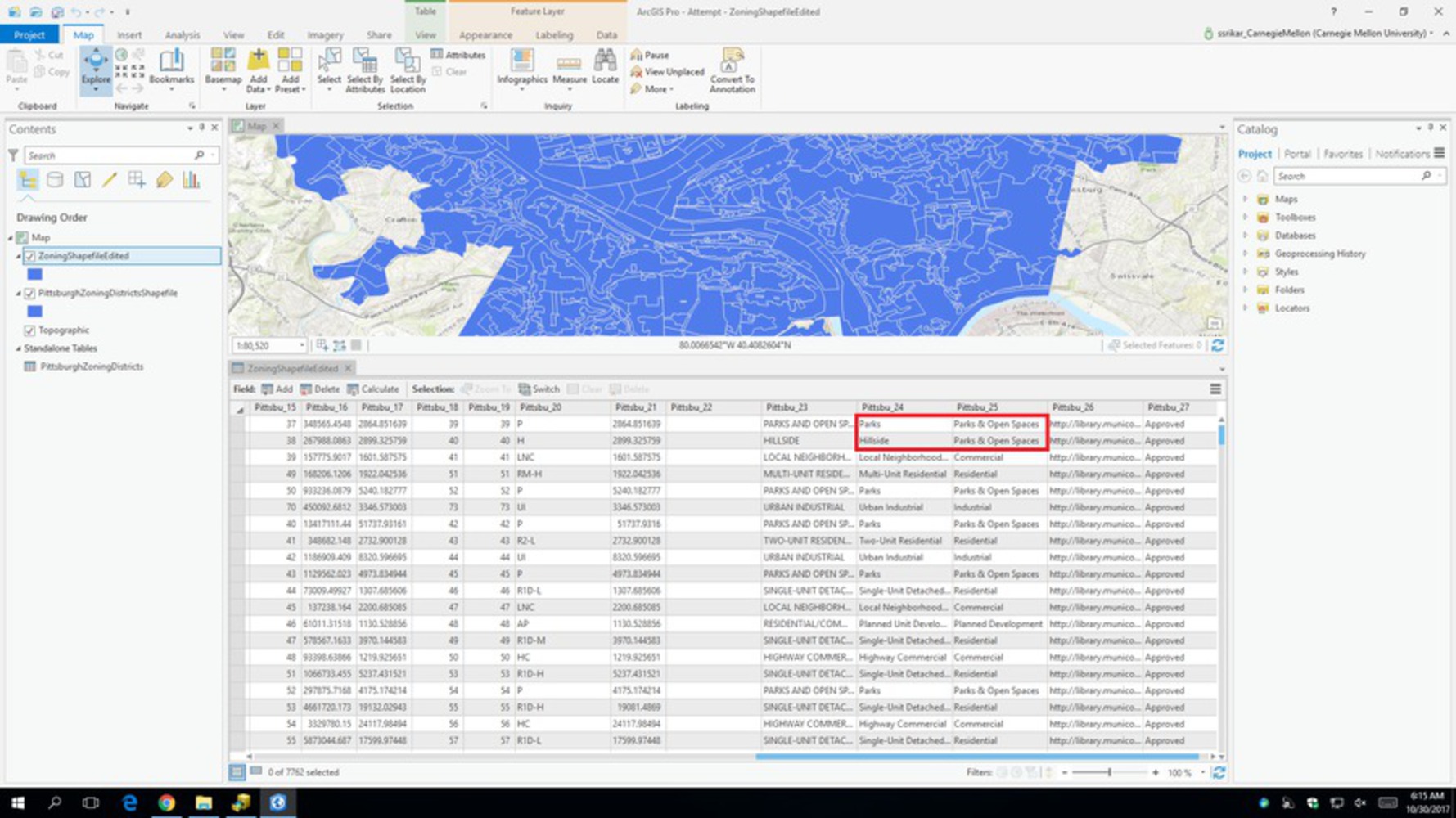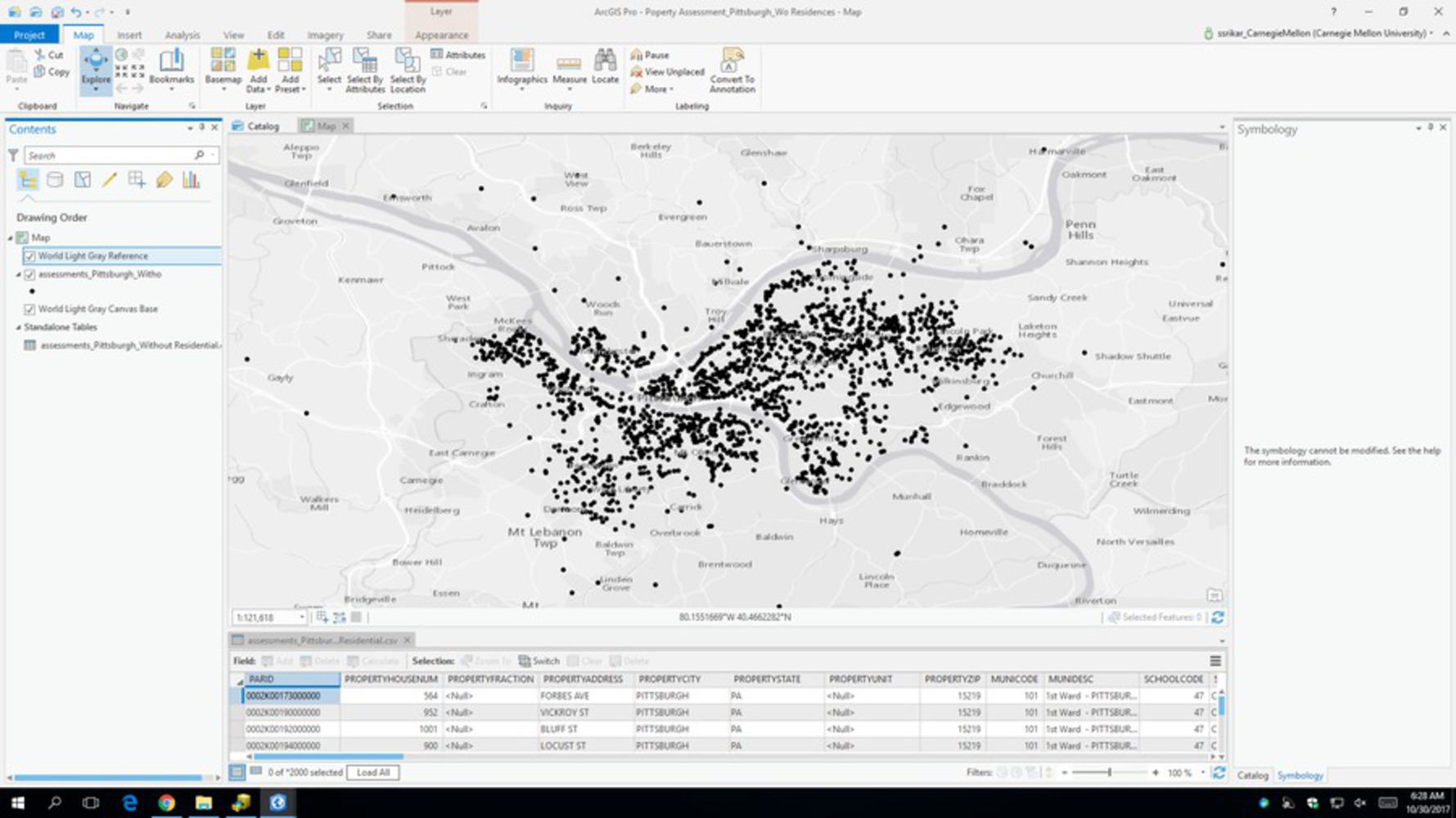Statement
City planning and design has come a long way from urbanist theories like 'Garden City' with their isolationist ideologies. The built environment is mimicking the internet in its search for interconnected-ness. The advent of new-age spaces like 'Live-Work' and 'Couch Surfing' have spawned entire industries. These spaces have been discovered in the intersection of non-traditional and yet surprisingly sequential information. Hence the potential of this project is to form the basis for a corollary: if we study the nature of locations, can we predict their use? In essence: Can we identify the potential of real estate using social media data?
Social Data
The data used required pre-filtering and spatial filtering. For instance the classifications for categories like Public Facilities etc. were clustered into fewer and similar categories. Other data sets that were shape-files required spatial joins made over ArcGIS Pro. The major category which was the Property Assessment data needed to be cleaned up (Removal of Residential Category) and broken down so that it could be used effectively on Carto.
- A social data set which you have personally assembled.
- An approach for analyzing the dataset and an accompanying description of the process + rationale for the approach
- A final representation/visualisation of the dataset
- A description of the outcome, insights generated and lessons learned.


